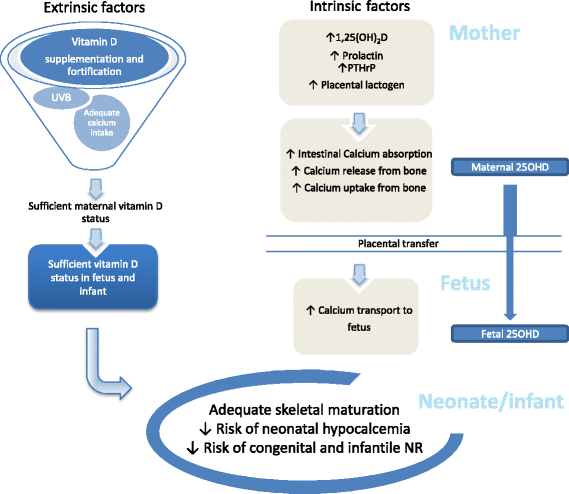The importance of vitamin D in maternal and child health: a global perspective
- PMID: 29450091
- PMCID: PMC5809824
- DOI: 10.1186/s40985-017-0066-3
The importance of vitamin D in maternal and child health: a global perspective
Abstract
Vitamin D and calcium are important nutrients for skeletal growth and bone health. Children and pregnant women are particularly vulnerable to 25-hydroxy vitamin D deficiency (VDD). VDD, with or without dietary calcium deficiency, can lead to nutritional rickets (NR), osteomalacia, and disturbances in calcium homeostasis. Multiple studies have linked VDD to adverse health outcomes in both children and pregnant women that extend beyond bone health. VDD remains an important global public health concern, and an important differentiation must be made between the impact of VDD on children and adults. Reports of increased incidence of NR continue to emerge. NR is an entirely preventable condition, which could be eradicated in infants and children worldwide with adequate vitamin D and calcium supplementation. The desire and necessity to put in place systems for preventing this potentially devastating pediatric disease should not elicit dispute. VDD and NR are global public health issues that require a collaborative, multi-level approach for the implementation of feasible preventative strategies. This review highlights the history, risk factors, and controversies related to VDD during pregnancy and childhood with a particular focus on global NR prevention.
Keywords: 25-Hydroxycholecalciferol; Child health; Global public health; Maternal health; Nutritional rickets; Review; Vitamin D; Vitamin D deficiency.
Conflict of interest statement
Not applicable.Not applicable.The authors declare that they have no competing interests.Springer Nature remains neutral with regard to jurisdictional claims in published maps and institutional affiliations.
Figures


References
-
- Pettifor JM. Nutritonal rickets. In: Glorieux FH, Pettifor JM, H J, editors. Pediatric bone: biology and diseases. Second. Londong, UK: Academic Press; 2012.
Publication types
LinkOut - more resources
Full Text Sources
Other Literature Sources

